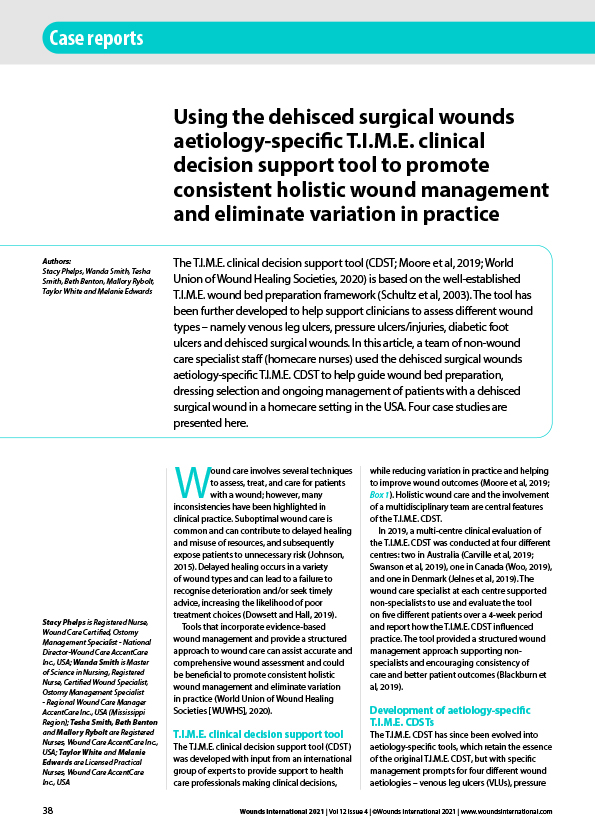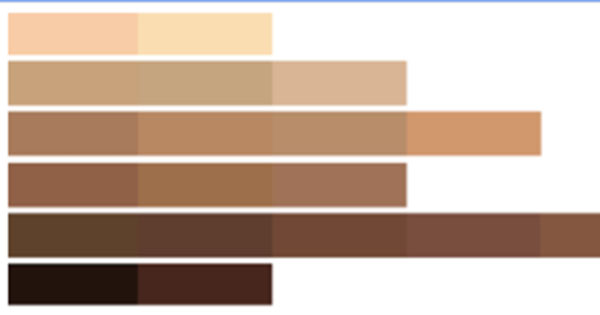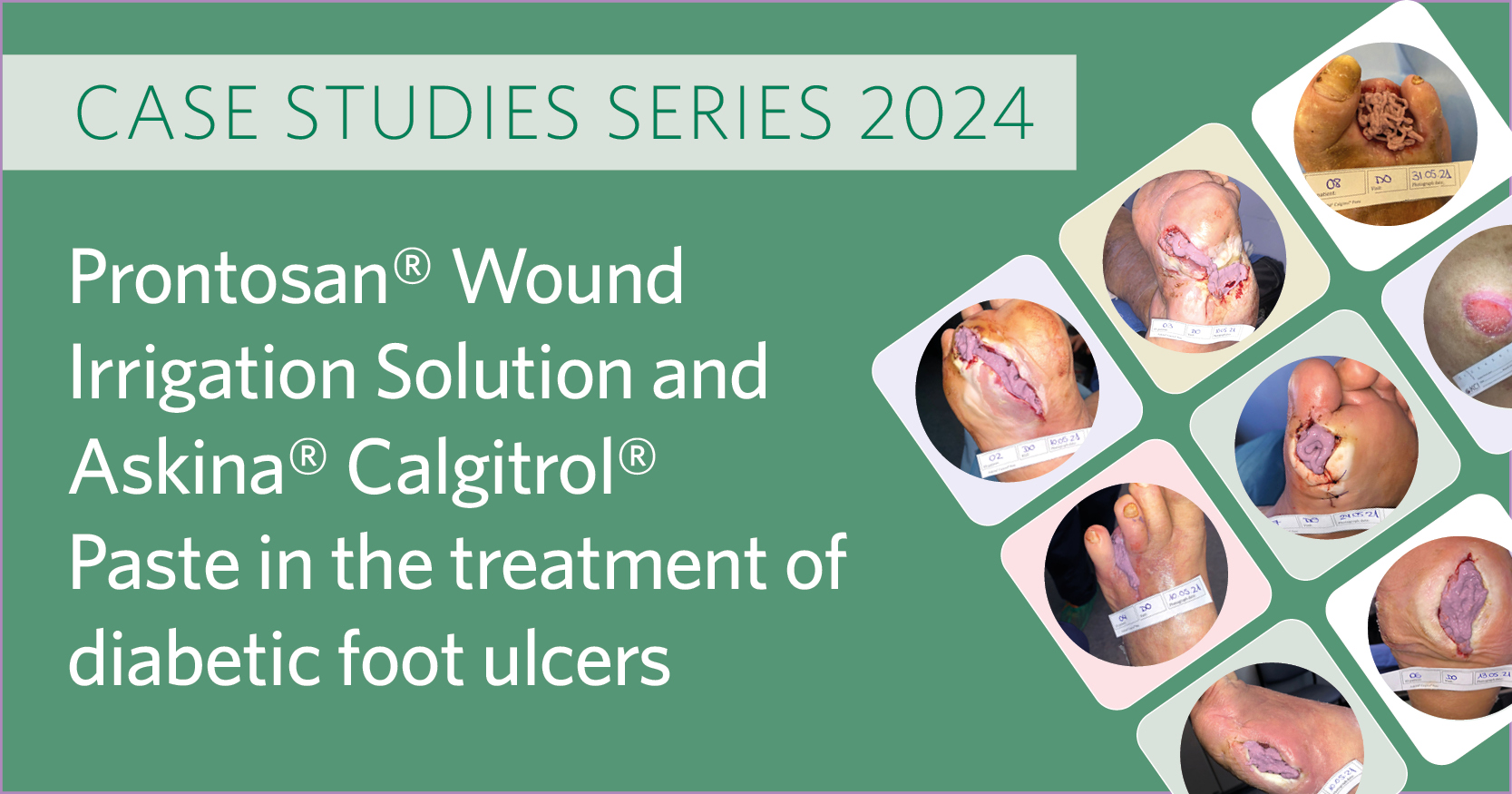The T.I.M.E. clinical decision support tool (CDST; Moore et al, 2019; World Union of Wound Healing Societies, 2020) is based on the well-established T.I.M.E. wound bed preparation framework (Schultz et al, 2003). The tool has been further developed to help support clinicians to assess different wound types – namely venous leg ulcers, pressure ulcers/injuries, diabetic foot ulcers and dehisced surgical wounds. In this article, a team of non-wound care specialist staff (homecare nurses) used the dehisced surgical wounds aetiology-specific T.I.M.E. CDST to help guide wound bed preparation, dressing selection and ongoing management of patients with a dehisced surgical wound in a homecare setting in the USA. Four case studies are presented here.







